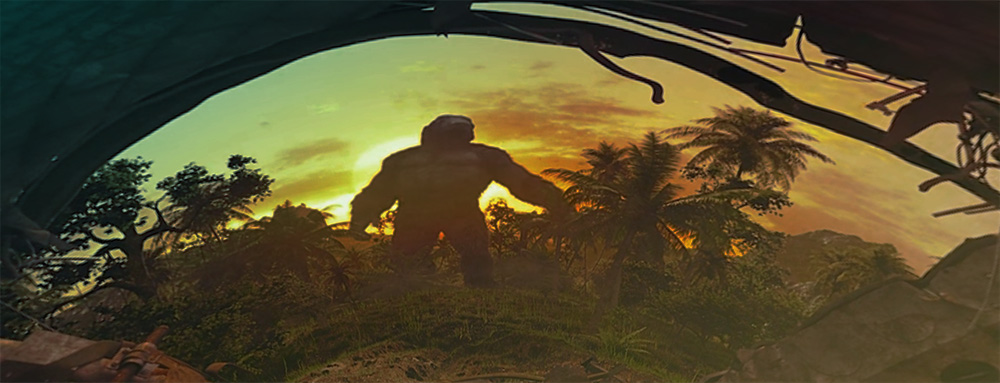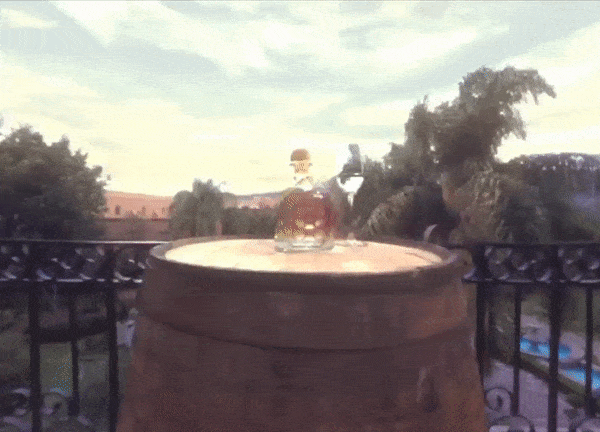Legend 3D launched its VR division over two years ago and has worked with numerous brands such as Mastercard, Patrón and Stubhub on different projects. Additionally, the company has made VR experiences for movies, including Suicide Squad, Crimson Peak and Kong: Skull Island. On the video game side, Legend 3D created the Rift Walk VR experience for Riot Games’ League of Legends, filmed during the 2016 League of Legends Worlds match in New York City, giving fans a tour through the game world. In short, the company knows how to put together high-quality VR experiences.

“The universal question we ask, no matter what space they’re in, is: why VR?” said Will Maurer, VP of VR & VFX at Legend 3D, talking with AListDaily. “You’d be surprised at the blank stares you usually get when you ask that question. Or they’ll say, ‘we need to do something in VR, so that’s why,’ instead of considering what’s important about the medium that lends itself to capturing an experience for the brand.
“The other question we ask is: what are the goals and initiatives of the experience or campaign? Once we have those, we work with the brands to fine-tune the experience. Sometimes it will be pre-rendered 360-degree video, so someone can just sit back and immerse themselves in a story made around the brand. Or it could be more interactive, such as picking up a can of Pepsi off a shelf. But it all starts with why they want to do something in VR.”
So, we turned the question back to Maurer and asked why brands should consider VR for its promotions.
“One reason is the engagement with the customer,” Maurer replied. “What typically happens with traditional advertisements is that there are a million distractions around you. You could check your phone, talk to somebody, or just look away. Most people will do something else once an advertisement comes on, but that’s impossible to do when in a VR headset. You’re fully engaged—there are no distractions—and that means a higher level of engagement with the potential consumer. Then it comes down to making it interesting and compelling for users to be part of that experience.”
Acting, along with sound and camera cues, will help draw the user’s attention to specific objects or areas featuring the brand. But Maurer explained that the most important thing to keep in mind is creating an experience that won’t make people sick, which was at the forefront of their minds when making The Art of Patrón, which features the perspective of a bee flying through fields and a production facility. “I liken it to the 3D boom 10 years ago, where a lot of people had bad experiences putting on glasses gave up on it,” said Maurer. “I see that happening a lot in VR, where people will try it say it’s not fun.”
He went on to say that location-based experiences being created by companies such as IMAX or The Void, which guarantee high-quality experiences, are a key part of further elevating VR technology. Maurer also stated that there’s longer engagement with experiences that involve some kind interaction compared to more passive video experiences
That being the case, we asked Maurer what separated a promotional VR experience from a video game. “Those lines are becoming more blurred because it’s not traditional content,” he said. “You’re not telling a story all the time—you’re placing them in the middle of an experience. That experience can be narrative driven, product driven, game based or it can be a mix of all three.”
With that in mind, what went into creating the League of Legends Rift Walk experience? “The first Rift Walk was at New York’s Penn Station during the League of Legends semifinals,” Maurer explained, “and Riot wanted to experiment with 360 video to give fans all over the world a chance to go through it. A quick turnaround was important, so they chose time over having everything stitched perfectly. We had to give the experience to fans a week after filming it.”
We then asked Maurer how Rift Walk compared to making virtual reality movie promotions. “League of Legends was more experiential,” said Maurer. “They wanted users to engage with other players in the game. With Kong: Skull Island, it was to sell tickets for a movie. At its core—whether it’s for a game, a product like Patrón, or a movie—it comes down to using VR as a vehicle to drive engagement to the core product. But the way you craft an experience for each of those is different.”

With so many VR movie promotions appearing in recent months, we asked Maurer if they were becoming more sophisticated with the way they were engaging audiences.
“For movie tie-ins, I’ve been a proponent of creating less of a promotional advertising piece and more of the writers, actors and producers involved early on to create VR side stories,” he replied. “For example, in if there’s a scene in a Star Wars movie where one ship is firing on another, the VR experience could put users in the opposite perspective. So, it’s not just promotional—it actually ties in so that audiences will want to experience what it was like to be in that scene after watching the movie. With a lot of movie promotions right now, we do something that’s after the fact, but I think things are headed for more cross-platform story tie-ins.”
Although it seems like the overall enthusiasm for virtual reality has quieted down, Maurer believes that there is still a strong future for the technology as it continues to progress, leading to richer experiences and more realistic immersion. “With the technology continuing to evolve, I think it will lead to different types of content, all the way up to what The Void is doing by letting people walk through entire buildings with a headset on,” said Maurer. “That will change the way content is created.”
Maurer then explained how the prevalence of low-quality content was one of the big challenges VR had to overcome.
“The market has been flooded with poor quality content and headsets like Cardboard, which aren’t the best,” said Maurer. “Imagine watching YouTube content on a phone from five years ago that has no production quality or standards. That’s where the industry is at right now. The poor quality content is scaring off consumers and brands. Brands don’t have a lot of analytics to track how long people are staying inside the headset, so things can get complicated if you’re not working with an experienced company like Legend to guide you through the process. But that is changing with technology and as more content creators that understand the medium jump in. Also, brands are getting more educated in working with VR, instead of saying ‘we need to do something in VR’ and spending money haphazardly.
“Our goal and passion is to make sure that any money spent on VR experiences are kept on the screen and will showcase the brand or IP at the highest level.”
So, what goes into making a memorable VR experience? “The key to a memorable experience is using the medium for what it’s good for: empathy and engagement,” said Maurer. “If you get someone to empathize with your brand or product, then that’s the best form of engagement. That’s what VR is great for—putting someone in a different world, environment or somebody else’s shoes.”
When asked what brands should keep in mind as they enter the VR space, Maurer emphasized how they should look to work with experienced companies. “There are a lot of traditional companies jumping in now to offer VR services to brands they’ve worked with in the past, but that doesn’t mean that they understand the complexities and nuances that are inherent with this type of content creation,” said Maurer. “This is not traditional media, there are a lot of differences, and you shouldn’t look at it from a traditional viewpoint.”

